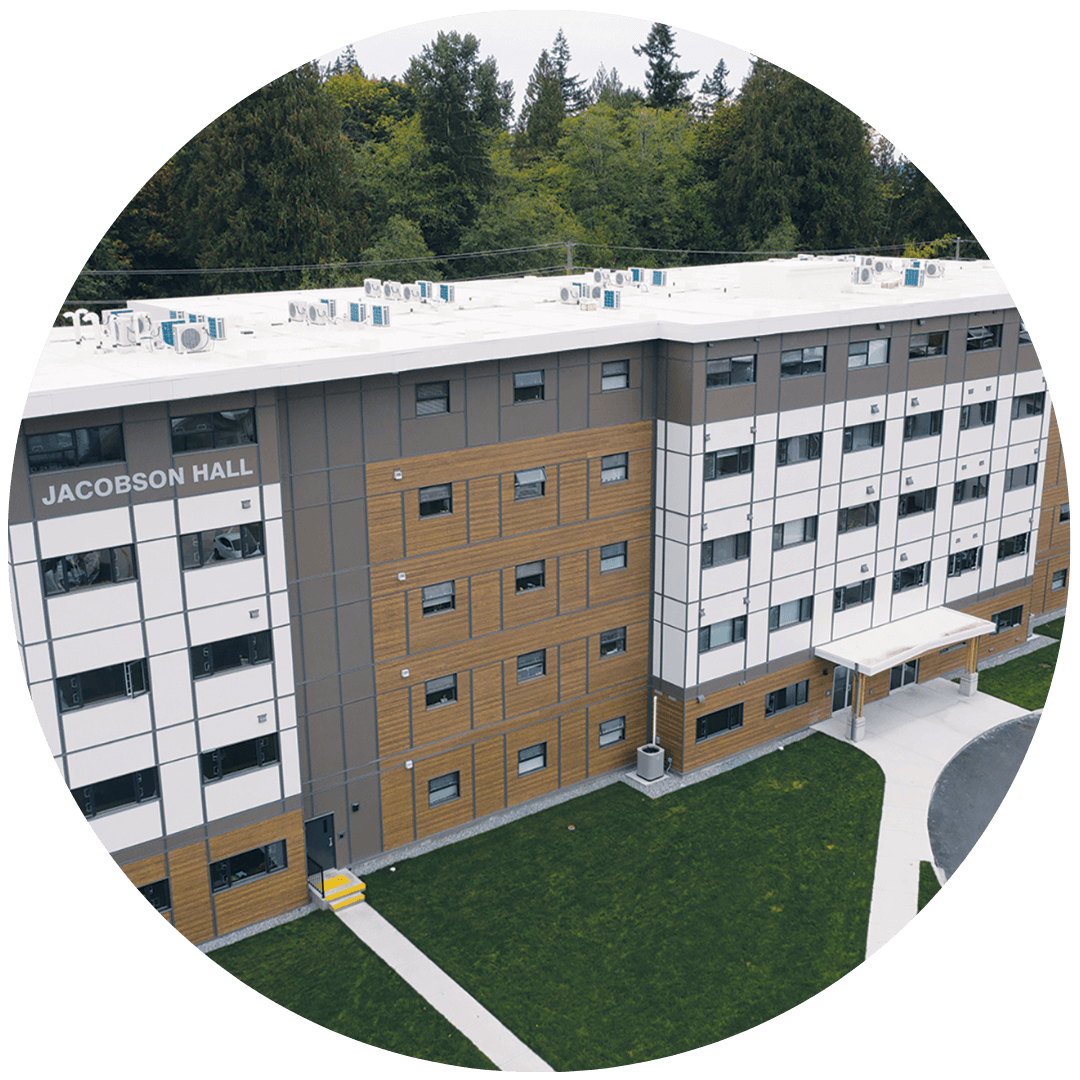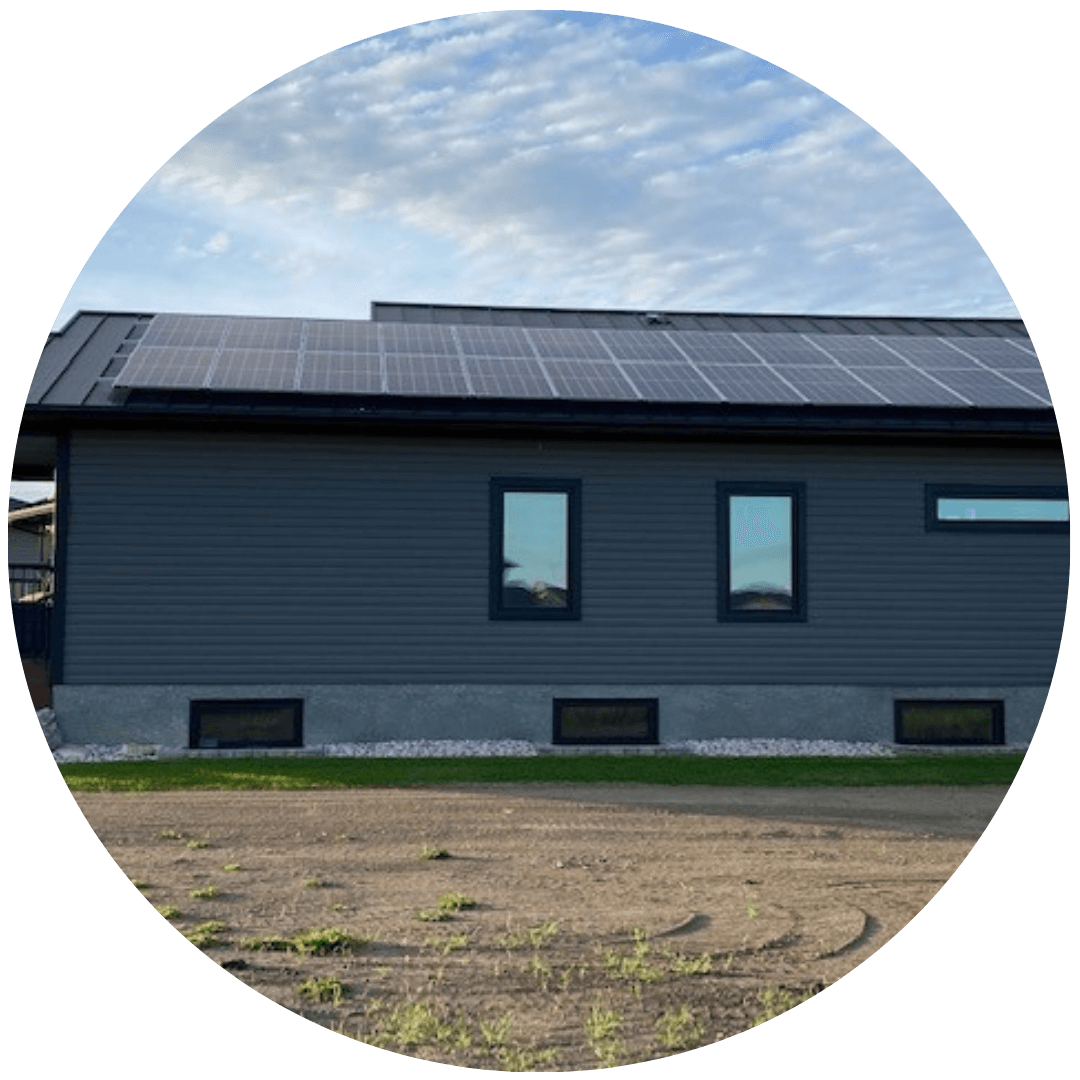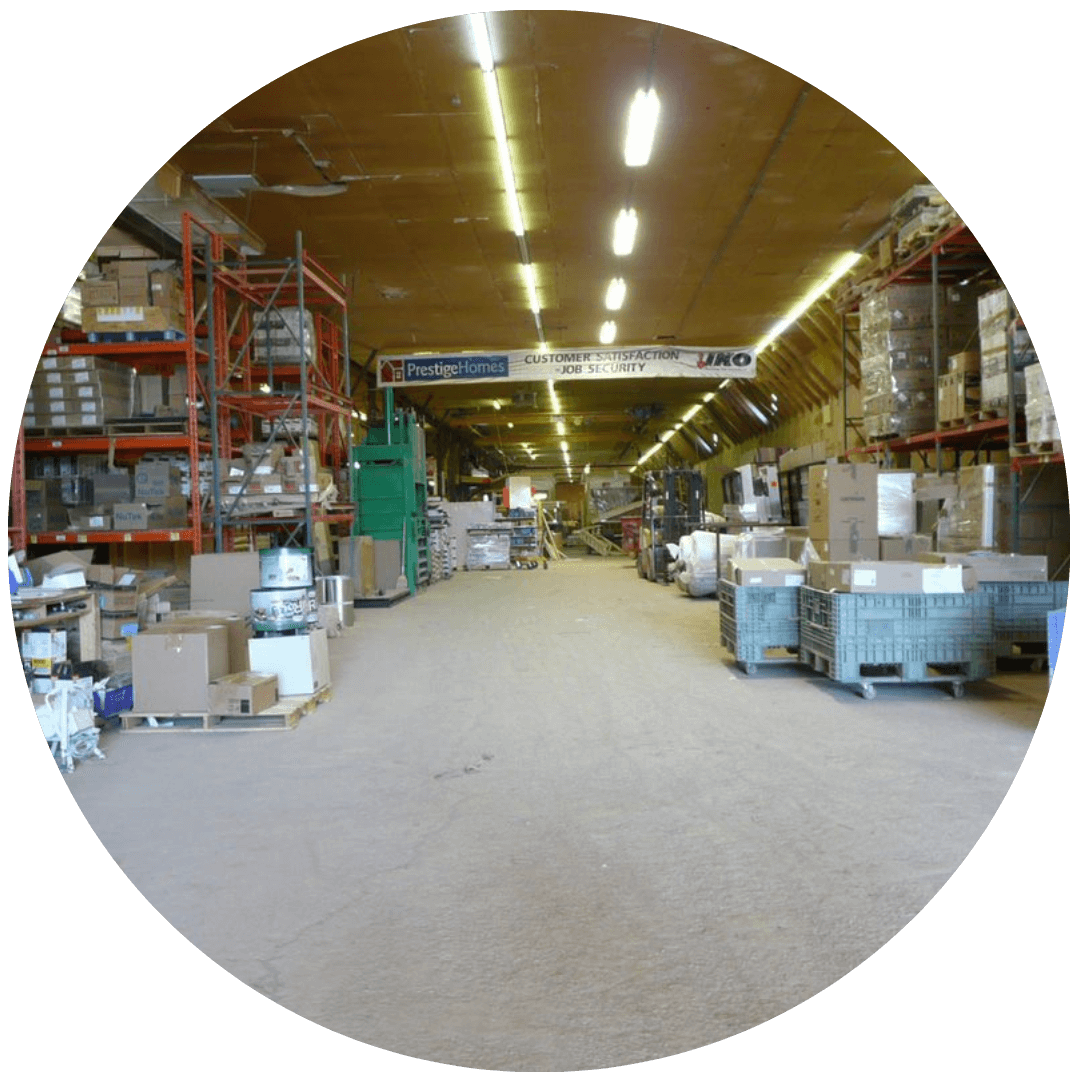Modular and the Environment
Factory construction can reduce the environmental impact of buildings. Aside from the fact that modular homes can be built with the same high-performance energy efficiency as site-built buildings—including net zero—modular construction processes can reduce greenhouse gas (GHG) emissions by more than 40%, and sustainable use of resources through effective waste reduction and a high level of building durability.

Reduced Greenhouse Gas Emissions
A 2009 study conducted by the University of Alberta during the construction of the North Ridge affordable seniors residence in St. Albert, Alberta found a 43% reduction in operational carbon emissions during construction and a more recent literature review has since confirmed the GHG reductions that can be achieved in off-site construction. The second study highlights the contributions of other segments of the GHG lifecycle such as embodied energy, transportation and waste disposal.

Energy Efficiency and Net Zero
Factory builders have repeatedly been first out of the gate when it comes to energy efficiency. When the R-2000® standard was introduced in Canada 40 years ago, it was a factory builder—Guildcrest Homes—who first became the largest producer of R-2000® homes. The first EnviroHome® was built at the Prestige Homes factory in Sussex, New Brunswick, and Canada’s first EQuilibrium™ Canada Mortgage and Housing Corporation demonstration home was built at the Alouette Homes factory near Granby, Quebec.
Canada’s first entirely Built Green® community was created in Alberta with the help of factory-based builder Triple M Housing, as was Canada’s first geothermal manufactured housing community, which was built by Parkbridge Communities. New Brunswick’s Maple Leaf Homes won Natural Resources Canada’s “Most Efficient House” Award in 2012.
Since then, CHBA Modular Construction Council members have continued to lead the sector in energy-efficiency, participating in CHBA’s Net Zero Home labelling program and working with Natural Resources Canada on net zero innovation research.
A Natural Resources Canada Net Zero Modular Case Study Project with Grandeur Housing, Guildcrest Homes, Supreme Homes, and Triple M Housing showed that a house in Climate Zone 7A with a heated floor area of 1375 ft² above grade and 1218 ft² below grade could be constructed with an annual energy load of 42 GJ (11802 kWh). The house was equipped with on-site renewable energy collection via solar PV having a capacity of 44 GJ (12198 kWh). The house complied with the 2020 National Building Code “Tier 4” requirements, achieving an overall energy improvement of 60.4%. You can learn about other this and other net zero houses and the particular construction specifications in this webinar.

Sustainability
Factory construction is a game changer when it comes to reducing waste during construction. The factory-based process allows larger material sizes and causes fewer or no cut-offs. Plus, the stationary nature of the factory and the controlled conditions inside it make it straightforward to recycle construction materials effectively.
Re-using leftover materials from one unit in the next is convenient in the factory because materials are stored nearby and remain protected. On many outdoor construction sites, material optimization and re-use may be much more difficult due to distance between projects and a lack of available storage space.
In addition, relocatable buildings—often used to house workers at remote sites—can also help reduce the overall environmental impact of construction by allowing for the reuse of buildings.

Resilience
When it comes to resilience—enduring extreme climate events with little damage, and recovering quickly afterward—factory construction offers some distinct advantages, especially while a home is under construction.
While a home is being constructed, the on-site process offers “passive” protection like shading or “active” protection with A/C equipment to mitigate the risk of overheating. In the factory, however, workers, building materials and equipment are protected from extreme conditions.
In the event of a flood during construction, there may be damage to unfinished buildings on-site, while a home being built in a factory is not affected. (This assumes that the factory is not affected by the same flood, of course.)
During rain and hailstorms, tornadoes and wildfire events, a home or building under construction could be exposed to wind forces or other elements that a half-completed roof or wall framing cannot withstand. A wildfire even 25km away from a project site could mean that construction activity needs to stop for insurance purposes. During these extreme climate events, it can be very difficult to protect unfinished projects at the site. When construction takes place in a factory—away from the area being affected—construction can take place even during a climate event and homes will not be destroyed by being exposed to the elements or extreme forces. Materials will not be compromised by fire or water and structural connections would not be loosened by wind. Community recovery may also be faster when rebuilding can take place off-site in a location that was spared from the extreme event.
Once the home is at the site, factory construction still offers an advantage. A factory-constructed home—built to withstand transport to the building site—generally offers higher wind and deformation resistance than would be required for a home built on-site, which also protects the factory-built home against lateral loads and uplift forces in extreme wind conditions.
CHBA's "Working with Modular" Webinar Series
“Working with Modular” is a six-part webinar series highlighting the features and benefits of modular construction. The content is designed to inform on-site builders and developers, code officials, municipal planners and housing specialists, government departments, lenders, warranty providers and other stakeholders engaged in the residential construction industry. We would like to acknowledge the support of the Canada Mortgage and Housing Corporation in the development of the webinar series as well as Altus Group for their work in the project.
To watch the videos in full-screen mode, click on the YouTube icon in the bottom right of the video after you hit play.
Additional Resources
Modular and The Environment
(June 23, 2022)
This webinar highlights how the factory construction process and the resulting factory-constructed buildings can reduce environmental impact and contribute to sustainability and climate resilience.
Contact
For more information contact:

Keith Herring
Director,
Modular & Construction Systems
613-230-3060 ext.261
Keith.Herring@chba.ca
